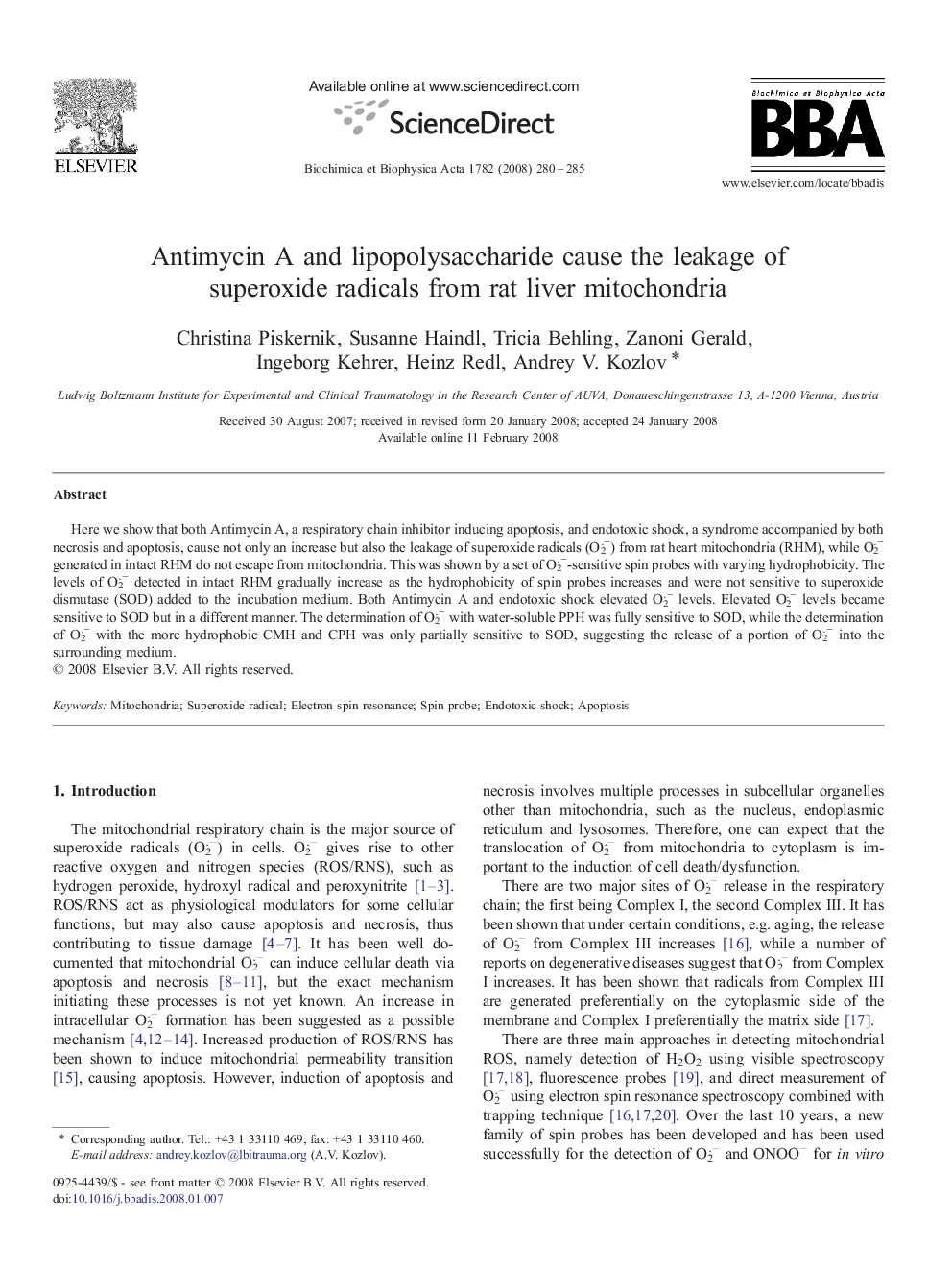| Article ID | Journal | Published Year | Pages | File Type |
|---|---|---|---|---|
| 1905716 | Biochimica et Biophysica Acta (BBA) - Molecular Basis of Disease | 2008 | 6 Pages |
Here we show that both Antimycin A, a respiratory chain inhibitor inducing apoptosis, and endotoxic shock, a syndrome accompanied by both necrosis and apoptosis, cause not only an increase but also the leakage of superoxide radicals (O2−) from rat heart mitochondria (RHM), while O2− generated in intact RHM do not escape from mitochondria. This was shown by a set of O2−-sensitive spin probes with varying hydrophobicity. The levels of O2− detected in intact RHM gradually increase as the hydrophobicity of spin probes increases and were not sensitive to superoxide dismutase (SOD) added to the incubation medium. Both Antimycin A and endotoxic shock elevated O2− levels. Elevated O2− levels became sensitive to SOD but in a different manner. The determination of O2− with water-soluble PPH was fully sensitive to SOD, while the determination of O2− with the more hydrophobic CMH and CPH was only partially sensitive to SOD, suggesting the release of a portion of O2− into the surrounding medium.
